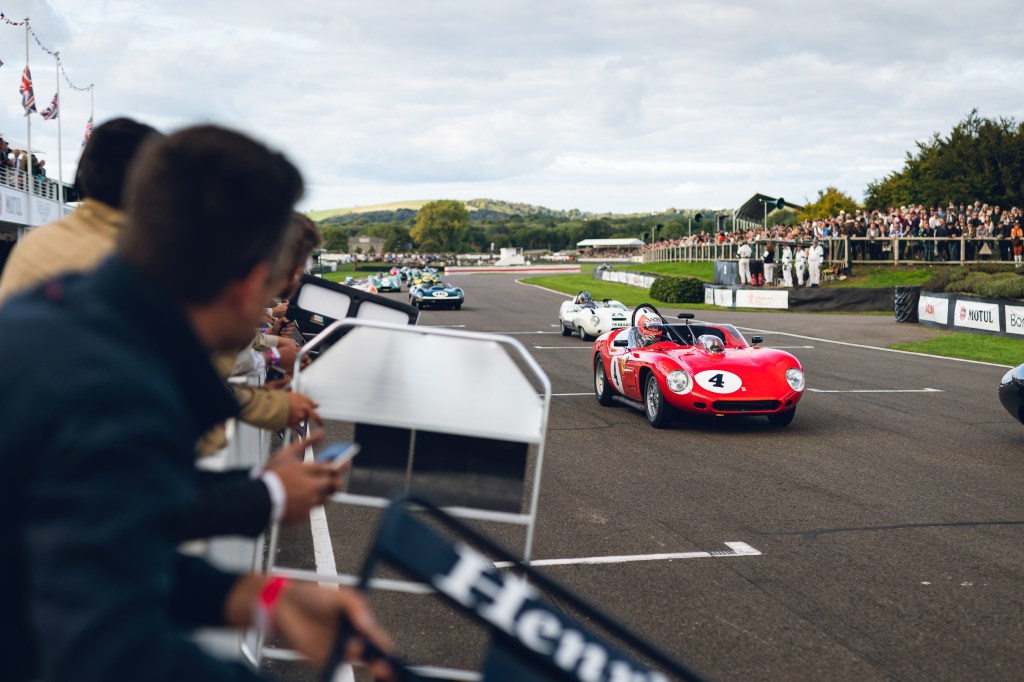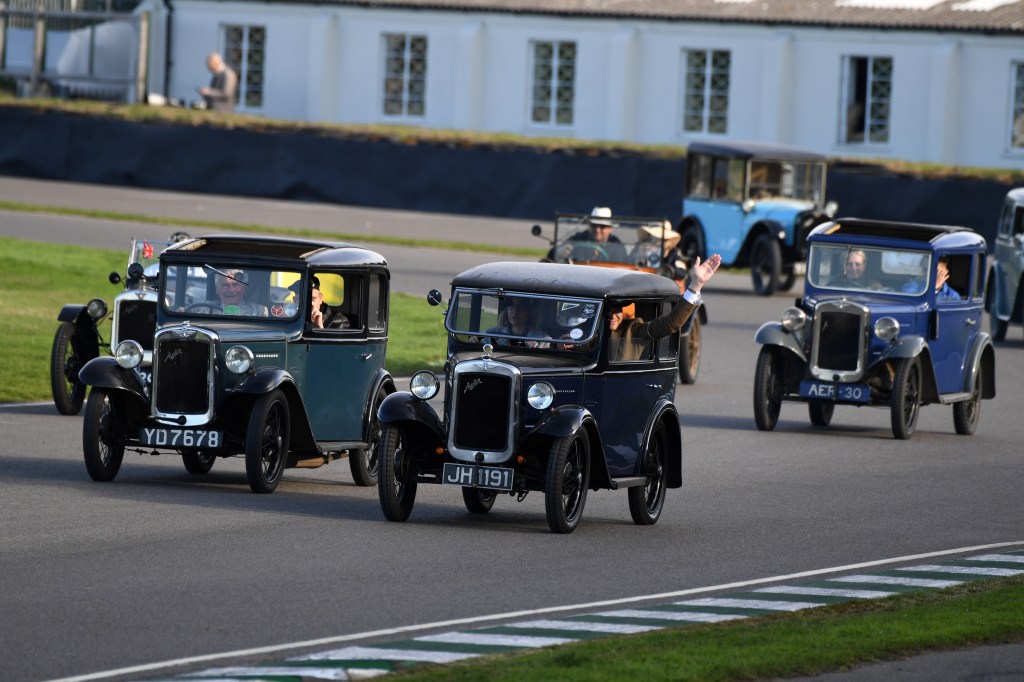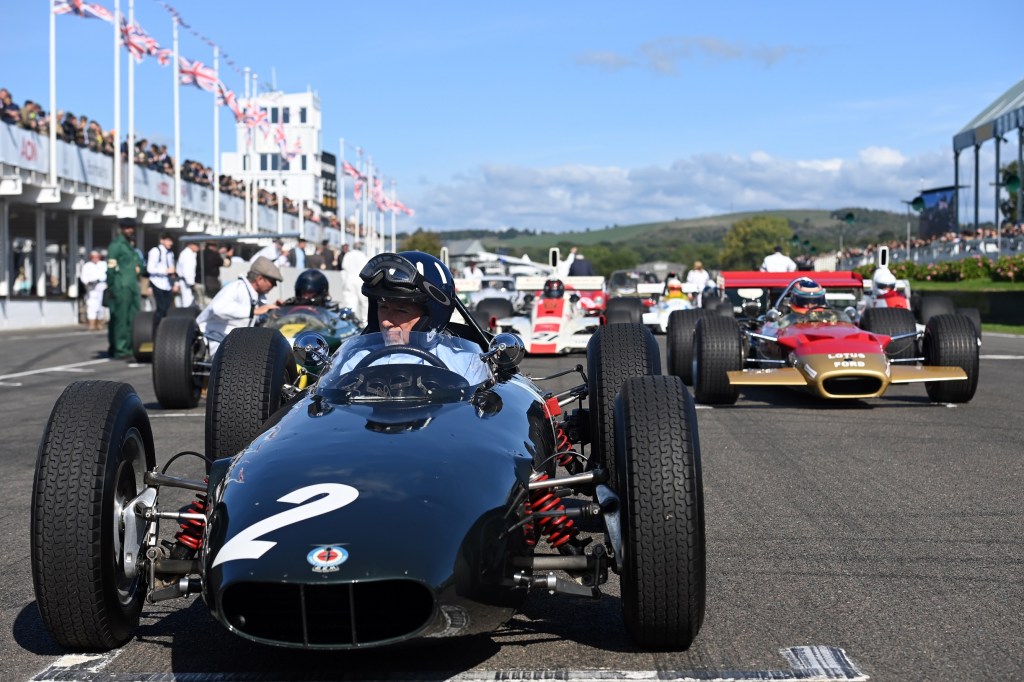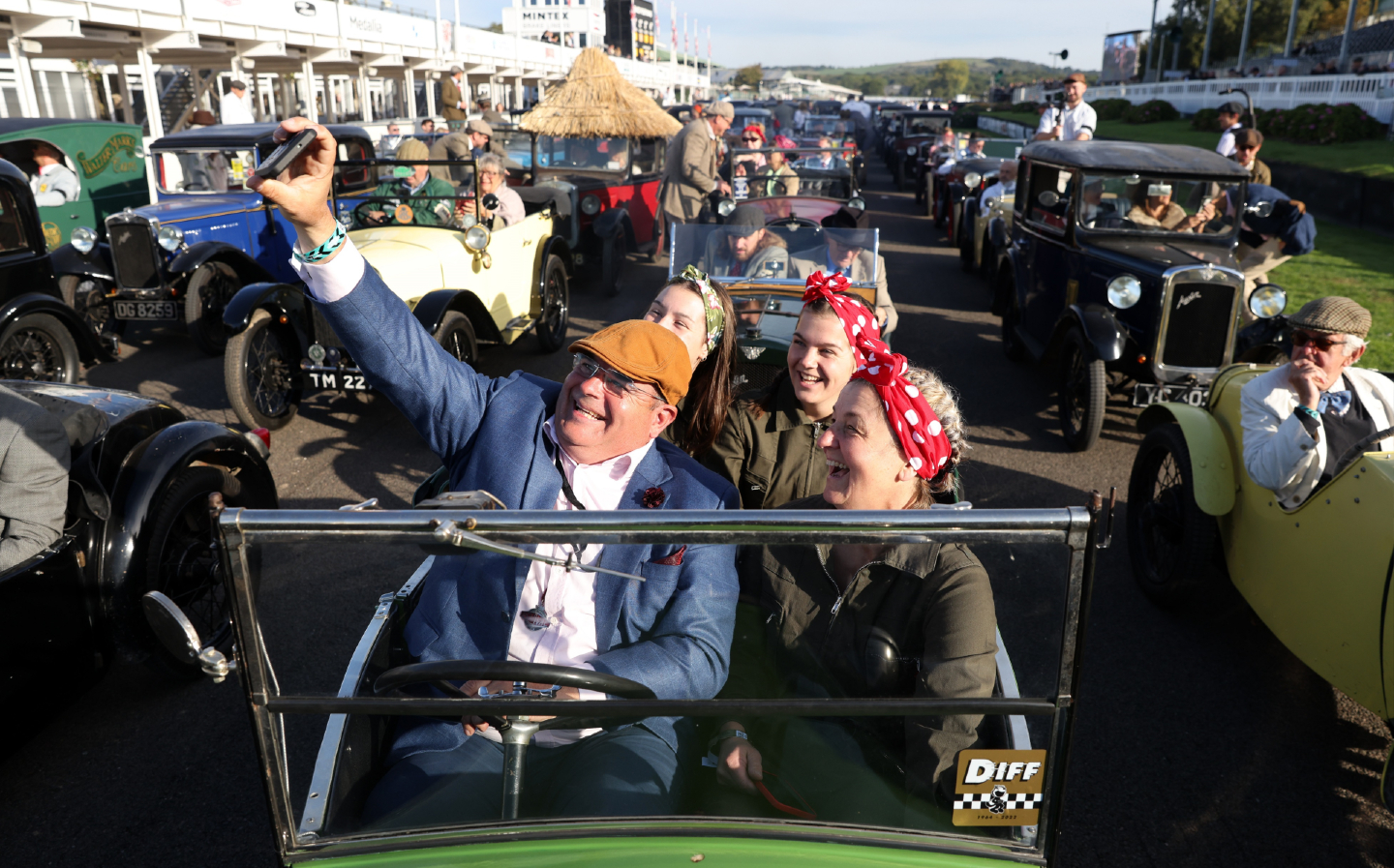Long live the Goodwood Revival, a glorious celebration of not just cars but their stories and people who drove them
At the Duke of Richmond and Gordon’s extraordinary motoring fancy dress party, Will Dron is struck by the true meaning of cars
A car is more than a mode of transport; it can be a member of the family or a connection to the past. That’s no revelation to most motoring enthusiasts but it hit me hard at this year’s Goodwood Revival; the first since my dad, Tony Dron, died in November last year.
Sitting in the press tent on Saturday morning, I watched my stepmother Charis pilot my late father’s 1932 Austin Seven around the track as part of a centenary celebration parade. This was immediately followed by official practice for the Sussex Trophy, which included a Ferrari 246S Dino that dad raced to three consecutive victories at Goodwood.
The last of those was 11 years ago, but I still regard that 246S as “dad’s car”. Of course, it’s nothing of the sort – dad was merely hired by the owner to race it.
And, of course, dad isn’t the only man to have raced it: as a Ferrari works car it finished second in the 1960 Targa Florio in the hands of Wolfgang von Trips and Phil Hill, and since dad retired from racing in 2011 it has been piloted very successfully by other drivers, including at recent Revivals in the very capable hands of Sam Hancock.

But to my family – and judging by the live TV feed, the commentators, too – that 246S Dino is intrinsically associated with Tony Dron.
It’s hard to imagine anyone not understanding this inherent connection between people and cars; even non-enthusiasts who’ve only ever driven company cars no more than two or three years old must have a grandparent who covets an MGA or Triumph Herald. Most of us formed a connection with our first car, usually a cheap-as-chips “pre-loved” supermini – a Citroën Saxo, Ford Fiesta or the like – and cherish the memories of cramming in as many friends as possible and hitting the road.
I was a slightly unusual case. Having a father who had edited Classic Cars magazine, my first set of wheels wasn’t a bargain supermini, preferably with an airbag and crumple zones, but a 1967 Austin Mini 850. I loved that car for its low-powered but eager engine, nimble chassis, high-maintenance hydrolastic suspension (I’d have to have it pumped up every six months or so) and pared-back interior (the huge central speedo; the thin steering wheel; the hinged seats; the cord door openers).
It was no motorway cruiser – flat out it could only just about keep up, and I never liked the way it stressed the engine – but I did take it on adventures. I vividly recall bunking off university for a week to travel north from Coventry, stopping to visit my old school friends at Nottingham, Durham and Glasgow unis.
On another late-night trip down from Liverpool to London shortly before Christmas, having visited and collected a pal, a connector to the dynamo came loose during a snowstorm on the M6, causing the wipers and lights to wither and die. They weren’t terrifically effective when operational but I missed them when they stopped working entirely, I can tell you. Some hasty hard shoulder repairs with a torch in my mouth got us going again, and we giggled most of the way back to London.
These are heady memories, and the ones that connect us with our cars. Modern vehicles are much more reliable and less easy to fix yourself roadside, though it is still possible to enjoy the “getting there” as much as the destination – even if we manage to do so without having to deploy insulating tape or a wheel nut wrench en route. In fact, the journeys can be far more interesting than the cars.
On Sunday at Goodwood Revival, I was allowed to jump in beside Charis in the Seven for the daily parade. Dad had bought it in 2010, so he only owned it for 11 years before he died, but it was special to him as it was almost identical to a car he owned when he was 17; the car that helped ignite his passion for motoring.

Dad had most of JH 1191 restored beautifully, though the engine was mid-repair when he died and Charis dutifully oversaw this project (which proved quite troublesome) to make it perfect – as dad would have wanted – for the Revival this year. To be in it and waving to the enthusiastic early-risers who’d made it to Goodwood by 9am, and were clearly loving the variety of Sevens lapping the circuit as much as we were to be in them, was a terrific feeling. Dad would have been very happy.
The Revival is one of the greatest celebrations of this human-to-car connection on Earth. Every vehicle has its story, and a long line of human worshippers, whether it’s an ultra-rare Ferrari 250 GTO or one of the 30 MGBs that took part in the Lavant Cup (one of this year’s Revival highlights, as it turned out).
The 246S Dino is just as special to my family as the Austin Seven, thanks to dad’s success behind the wheel. Some of our proudest moments were watching him drive that car, particularly the 2003 Sussex Trophy, which he managed to record in words and on video. Dad is estimated to have won events in 24 makes and 41 models of car but the 246S is one of just four cars we arranged to be on display at his memorial earlier this year.
And so on Sunday at the Revival, we gathered round the car in the paddock to have our photo taken with it, and at future Revivals I’ll always be cheering for the plucky 2.4-litre V6 Ferrari in the Sussex Trophy. The 246S is one car through which dad’s name lives on, just as Hill and von Trips live on through it and the other cars they raced.
And in the same way, you’ll have friends and family members who live on through their cars. While we all have expiry dates, cars don’t need to – they can survive in perpetuity; monuments to the owners they leave behind. Echoes of their existence.

Nearly 140 Austin Sevens took part in the Revival parade, some dating back almost as far as the model’s launch year. That’s 140 cars, each with up to 100 years of stories to tell. Also at the Revival this year were a celebration of 75 years of Ferrari and an emotional parade of cars driven by Graham Hill, which wonderfully illustrated the depth and breadth of his racing achievements.
Events such as the Goodwood Revival are really celebrations of not just the machines but the people who drove them and now enable them to survive.
Main photo: PA
Related articles
- If you enjoyed this opinion piece about The Goodwood Revival, you may be interested in our preview of the 2022 event
- Did you know that a fifth of classic cars fail their MOT — despite not needing one
- And take a look at why Jeremy Clarkson awarded a rare five stars to a £320,000 Alfa Romeo restomod
Latest articles
- Bedeo Defender 110 2024 review: Does electric Landie with in-wheel motors make for a perfect off-roader?
- F1 2024 calendar and race reports: What time the next grand prix starts and what happened in the previous rounds
- BYD Seal U 2024 review: Chinese brand adds plug-in hybrid SUV to its electrified line-up
- New Mini John Cooper Works revs up for Nürburgring 24-hour race debut
- Ineos Grenadier Quartermaster 2024 review: British pick-up is a tough mudder but too flawed to be a real workhorse
- Mini Cooper SE 2024 review: All-new electric hatchback is playing to the crowd
- Jeep Wrangler 2024 review: Impressive off road but you’d still have to be a committed contrarian to buy one
- Around 500 Ford workers in UK could go on strike over cost-of-living pay dispute
- Durham solar car team to take part in 24-hour race with smart tyres and night-driving solution














